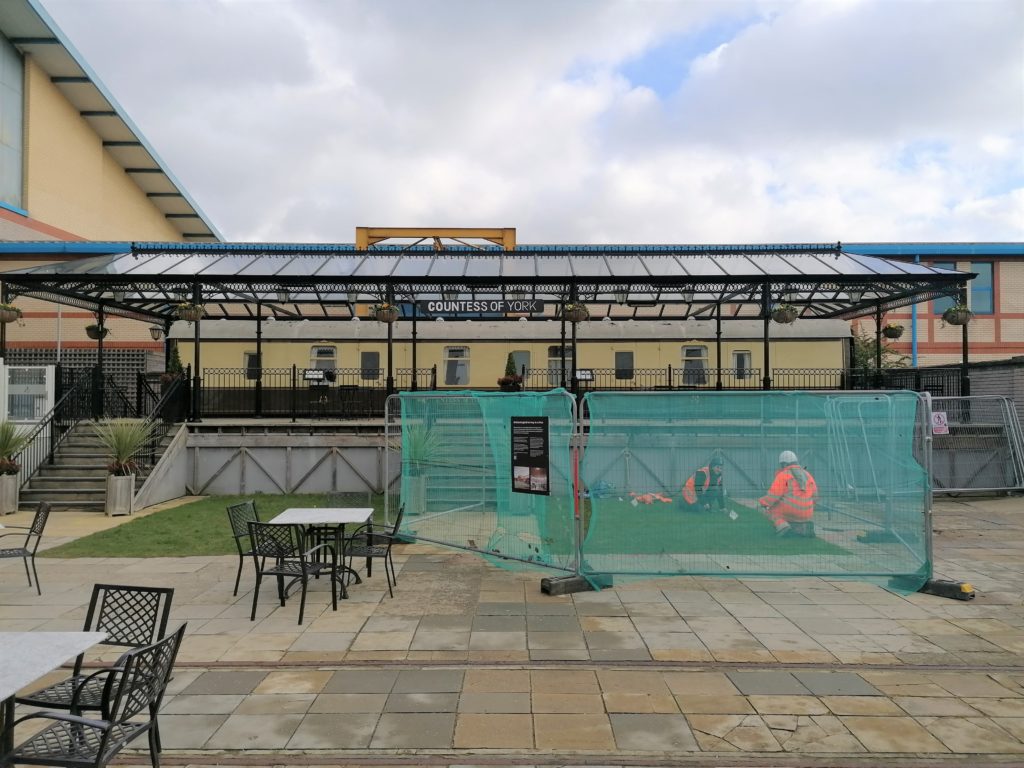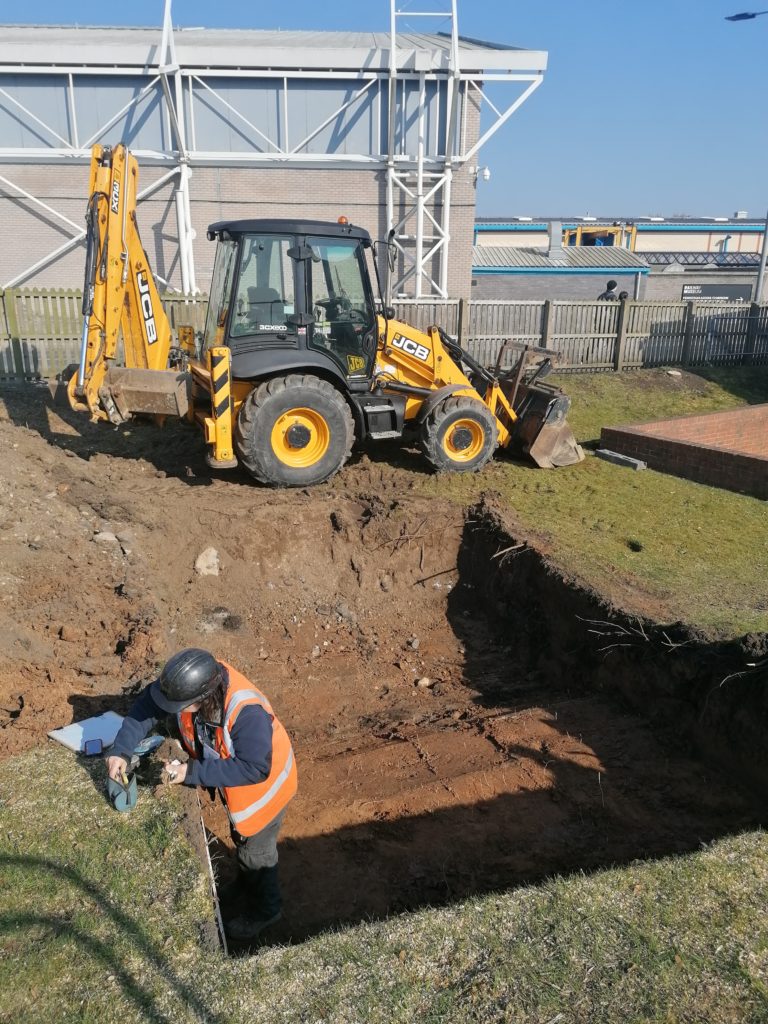We are excited to be working at the National Railway Museum to carry out an archaeological evaluation for their new development, Central Hall. Trenches will be excavated to understand the potential impact of construction.
These excavations are trial trenches, which will help us determine how preserved any archaeology might be. York is known for its water-logged conditions, which leads to well-preserved organic remains, such as those found during the Coppergate excavations in the 1970s and 1980s. We also want to develop a deposit model of the area, showing archaeologists and developers where areas of archaeological interest are likely to be, so those areas can be targeted in the future.
Previous excavations in this area of the city have uncovered Roman burials along a former Roman road leading out of the fortress. Archaeologists have also uncovered material related to the railway industry as it evolved and changed from the 18th century to 20th century.
York itself has been a hub of activity for over 2,000 years. Even before the Romans arrived in AD43, prehistoric people were moving through the area, particularly near the River Ouse and the River Foss. A cache of prehistoric tools, including stone axes, arrowheads, and scrapers, were found in the area during the late 19th century and became known as the York Hoard (not to be confused with the Vale of York Hoard).
The arrival of the Romans also meant the arrival of permanent structures here in York—or Eboracum, as they called it. The Minster today stands on where the legionary fort was built, first in wood and then in stone. Here along Leeman Road, archaeologists have found several cemeteries, ranging from simple graves marked with cobblestones to higher-status brick tombs.
During the 7th century, York—now called Eorforwic—the area here was known as Bysshopfeld, or Bishop’s Fields. From what we can tell, these fields were used for agriculture. Unlike the rest of York, during the Viking era, not much was happening in this particular area and so we think it was still being used for agriculture.
When the Civil War came to York in the 17th century, the Bishop’s Fields area was used by Parliamentary forces to siege the city, as the land here was perfect for positioning their artillery to attack the city walls. After the Civil War, the area was used for agriculture once again.
In the 18th century, when the railway system began expanding, York was chosen as the site of a regional hub, and the Bishop’s Fields area was determined to be the best spot to build the new rail station. Throughout the 19th century, the station and its rail lines were expanded, with associated buildings, like a coal depot, goods station, and engine shed, constructed alongside.
The 20th century brought more change to the area, with the expansion of the station thanks to LNER and the development of the National Railway Museum, which has taken over the former goods station and locomotive depot.


